My newest hobby during COVID-19
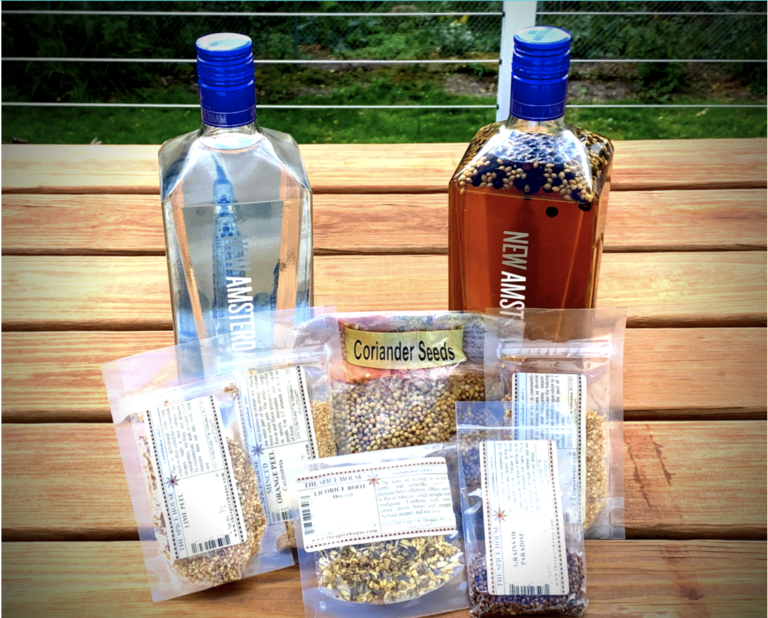

I’ve never quite understood people who love vodka. It’s basically a clear, tasteless liquid with no defining features. What’s so special about that?
Since I’m writing this article, you’ve probably sussed out gin is my alcohol of choice. I never get sick of the taste of pine trees in my mouth. I know that sounds a little odd, but it makes me nostalgic about Santa Claus and reindeers.
I will say, the one good thing about vodka is it’s essentially a blank canvas. And this isn’t my opinion.
Check out how the Code of Federal Regulations legally defines vodka:
“Vodka” is a neutral spirit so distilled, or so treated after distillation with charcoal or other materials, as to be without distinctive character, aroma, taste, or color.
See, I wasn’t joking when I said there’s nothing special about vodka.
Transforming vodka into gin
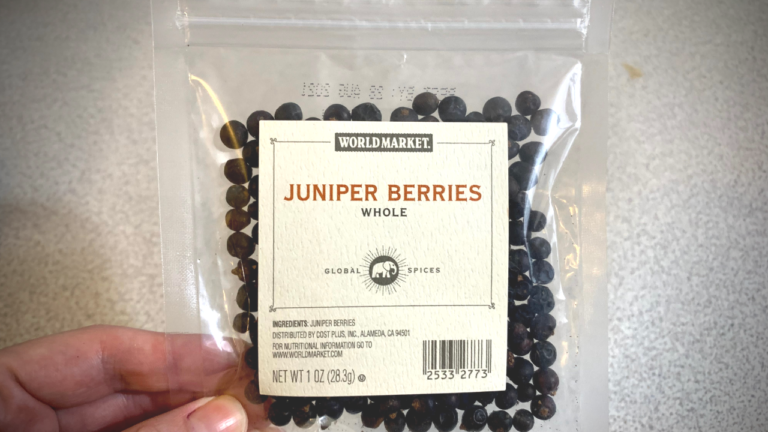

Since vodka is a nearly pure mixture of ethanol (alcohol) and water without any characteristic flavor or aroma, it’s the perfect starting point for creating your own homemade gin.
This isn’t much different than how commercial manufacturers of gin begin their process. Most producers begin with a “neutral spirit” as the base. Generally, this neutral spirit is made from a mixture of potato, rye, wheat, or corn. In other words, they begin with vodka.
So, when it comes to gin, it’s simply a flavored vodka where the main flavor is derived from juniper berries.
And recently, I realized my local spice store carried dried juniper berries. The berries are dark blue, almost black in color and about the size of a pea.
Juniper berries contain a flavor molecule named alpha-pinene which gives that pine or rosemary taste characteristic to all gins. A secondary flavor is provided by the compound limonene that lends a more citrusy flavor.
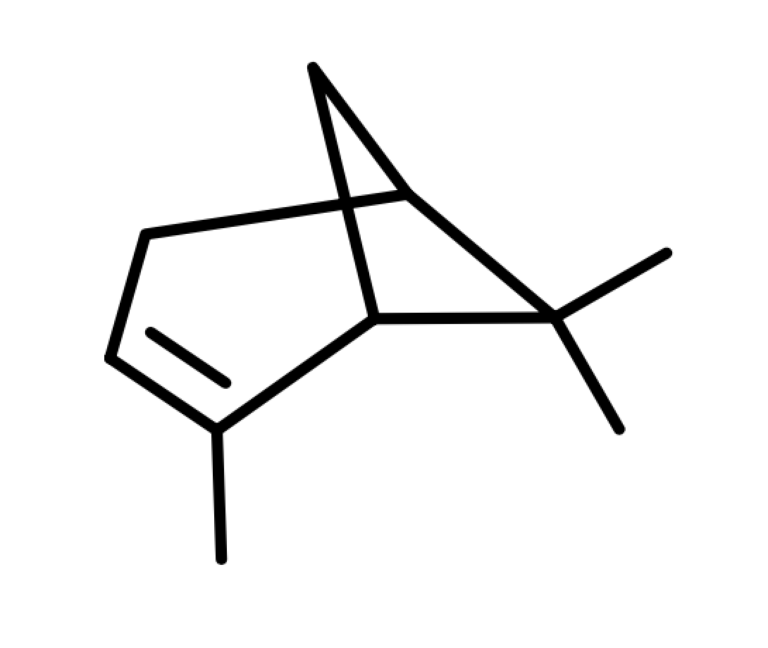

To round out and mellow the flavors provided by the berries, several other spices are added. In general, the specific mixture of herbs and spices is what distinguishes one gin from another.
Each brand has their own special formula. But, here’s a couple of the most common spices and herbs in gin:
- angelica root
- coriander
- grains of paradise
- bay leaf
- cubeb
- cardamom
- fennel
- lavender
- citrus peel
- ginger
- orris root.
Now, I couldn’t find all of these spices and herbs in my local store, but I definitely found enough to make delicious and well-balanced gin.
My gin recipe
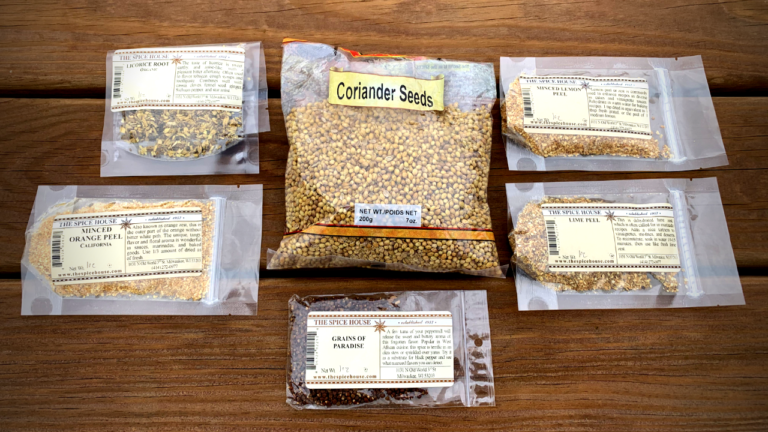

Let me start by saying this is only my second batch of gin and I’ve been tweaking the recipe each time. But, here’s my most recent version:
- 1.75 liters vodka
- 40 gram juniper berries
- 6 grams grains of paradise
- 6 grams coriander
- 4 grams licorice root
- ½ teaspoon or 1 gram orange peel
- ½ teaspoon or 1 gram lemon peel
- ½ teaspoon or 1 gram lime zest
I found all these spices and herbs at my local spice house with little trouble. And I’ve been using New Amsterdam vodka as the base, but any brand should work fine.
I used a kitchen scale to weigh out each ingredient. The scale wasn’t quite sensitive enough to measure 1 gram or less of the spices. That’s why I have the orange peel, lemon peel, and lime zest listed as ½ teaspoon. From my best estimate, that should be close to 1 gram if you have a more sensitive scale than me.
The directions
- Open the vodka and empty out two shots worth of the liquor. This will make room for the spices and herbs to be added.
- Weigh out each ingredient and use a funnel to easily drop them into the bottle of vodka.
- Once everything is in, tightly close the bottle, and turn it upside down several times to mix.
- Let it sit as the spices and herbs infuse the vodka with flavor.
Each day I pour out just a sip or two of the gin to track its flavor progression. Once you’re happy with the flavor, drain out all the spices and store the gin in its original bottle.
I’ve found that three days is a good amount of time for the alcohol to be infused with the flavor.
Why’s homemade gin brown?
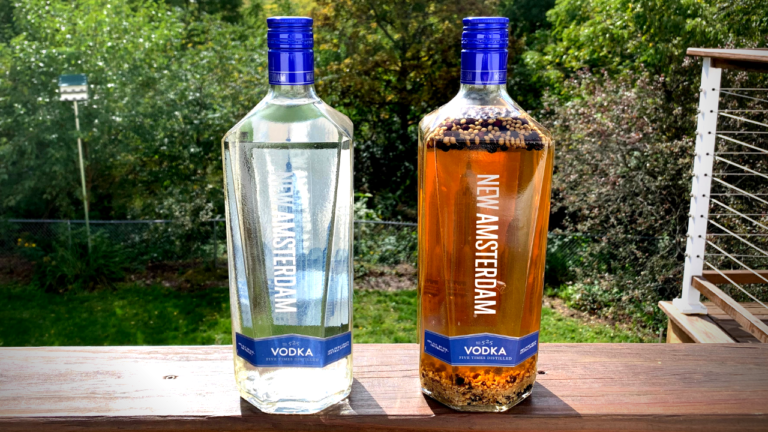

I’m guessing by now you’ve noticed the deep amber color of the homemade gin? It’s quite the contrast to commercial gins that’re typically clear and colorless.
The difference in hue stems from commercial gin going through an extra distillation step after being steeped with the herbs and spices.
Distillation is a simple separation technique that slowly heats a liquid to separate compounds out via their boiling point. Since we know a mixture of ethanol-water boils around 78°C, this is the fraction of the liquid that is kept and turned into the final commercial product.
Since most distillers discard any compounds that boil above or below 78°C, the gin is stripped of the molecules that lend color and pigmentation.
I’m guessing like me, you don’t have a distillation set-up, so the colorful molecules will remain in the homemade gin giving the brown hue.
There is a certain type of gin, sloe gin, that closely resembles this homemade recipe. Sloe gin, unlike other commercial varieties, doesn’t go through the final distillation step. It too retains a deep amber color.
Like I said, my recipe is still a work in progress, but it’s been a fun experiment to tinker with. And with so many days being spent at home, it’s an easy way to pass the time.
Let me know if you have any additions to the gin recipe, or if something different works well for you.
Maybe by the end of this, we’ll all be expert gin makers.

